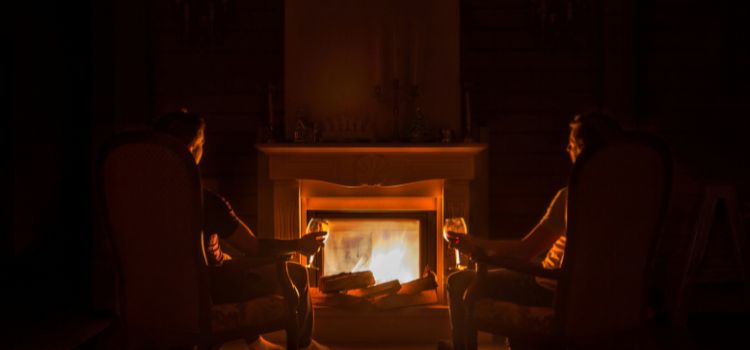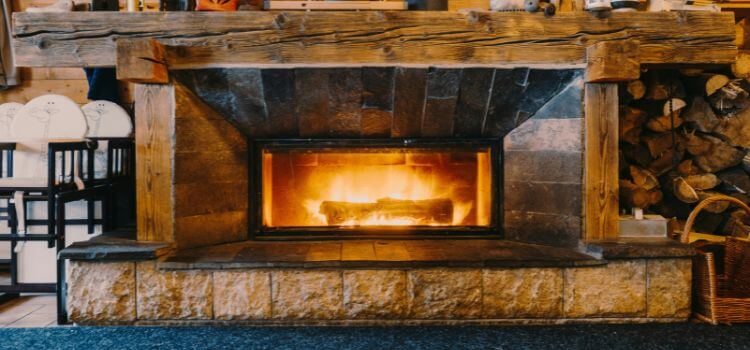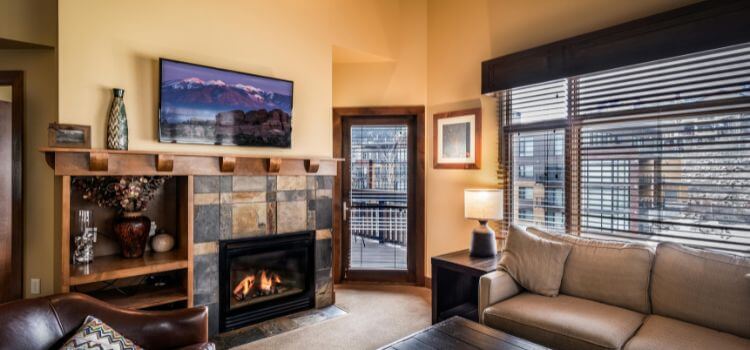
Yes, electric fireplaces do give heat. These types of fireplaces use electricity to generate heat and warmth.
Electric fireplaces have become popular among homeowners who wish to take advantage of the coziness and warmth of a traditional fireplace without dealing with wood burning or gas. They are easy to install, cost-effective, and don’t require any venting.
There are many different sizes and kinds of electric fireplaces, from wall-mounted to freestanding, and they can heat small or large areas. Unlike traditional fireplaces, electric fireplaces don’t emit harmful fumes or require regular maintenance. They also have adjustable temperature settings, allowing you to control the heat they produce. Whether you want to add a cozy touch to your living room or heat your entire home, electric fireplaces can provide a convenient and efficient solution.
Electric Fireplaces: A Cozy Aesthetic
Electric fireplaces offer style and warmth to any space, with adjustable heat settings to ensure comfort. These modern units provide efficient heating while adding a cozy and inviting ambiance to your home.
The Appeal Of Modern Electric Fireplaces
Modern electric fireplaces offer both warmth and style, creating a cozy ambiance in any space.
- Efficient heating technology
- Realistic flame effects
- Remote control convenience
Design And Installation Flexibility
Electric fireplaces provide the flexibility to be installed in various settings, enhancing the room’s aesthetic appeal.
- Wall-mounted or freestanding options
- No venting or chimney is required
- Customizable designs to suit any decor
How Electric Fireplaces Work
Electric fireplaces utilize heating elements and a fan to produce warmth in a room. These fireplaces are designed to mimic the look and feel of traditional fireplaces without the need for wood or gas.
The Mechanism Of Heat Production
Electric fireplaces generate heat through heating elements located inside the unit. When the fireplace is turned on, these elements warm up and radiate heat into the room. A fan then circulates the warm air throughout the space, providing efficient heating.
Comparing With Traditional Fireplaces
- Electric fireplaces are safer than traditional ones due to no actual flames.
- The installation of electric fireplaces is straightforward and versatile.
- Electric fireplaces are energy-efficient and cost-effective in the long run.
Types Of Electric Fireplaces
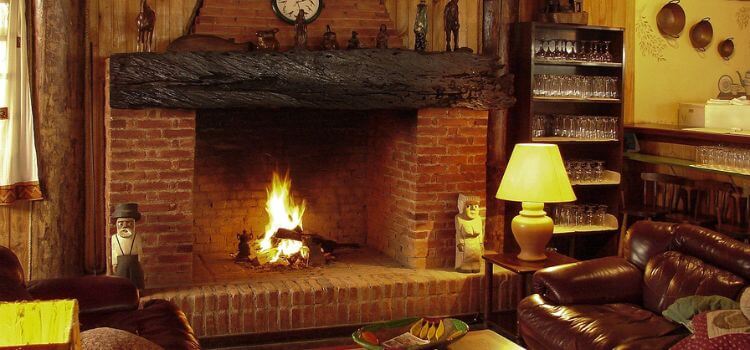
Electric fireplaces come in various types, each offering unique features and benefits. Whether you prefer a wall-mounted unit, a freestanding model, or an insert for an existing fireplace, there is an electric fireplace option to suit your needs and style.
Wall-mounted Units
Electric fireplaces installed on walls are called wall-mounted fireplaces, creating a sleek and modern look. These appliances are perfect for cramped areas; installing them at eye level will provide the best viewing experience. They provide a great heating solution while being a stylish focal point in a room.
Freestanding Models
Freestanding electric fireplaces offer versatility and convenience. These models can be placed in any room and moved quickly if needed. They often resemble traditional wood-burning stoves or mantelpiece fireplaces, adding a cozy ambiance to any space. Electric stand-alone fireplaces come in various styles and dimensions to suit different decor preferences.
Inserts For Existing Fireplaces
Electric fireplace inserts are made to work with already-existing traditional fireplace openings, providing a convenient way to transform a fireplace that burns wood into an electric one. These inserts are an excellent option for those who want to retain the look of a traditional fireplace while enjoying the benefits of electric heating. They frequently have heat-adjustable settings and realistic flame effects.
Heating Capabilities
Regarding electric fireplaces, one of the most important aspects to consider is their heating capabilities. Understanding how much heat they can produce and how efficiently they can warm a space is crucial in determining their practicality and effectiveness as a heating source.
Understanding Btus
British thermal units, or BTUs, are units of measurement that determine the heating capacity of electric fireplaces. It represents the heat needed to raise a pound of water’s temperature by one degree Fahrenheit. The higher the BTU rating of an electric fireplace, the more heat it can produce, and the larger area it can effectively warm.
Room Size And Heating Efficiency
Electric fireplaces are designed to heat specific room sizes efficiently. When choosing an electric fireplace, it’s essential to consider the square footage of the area you intend to heat. A fireplace with a high BTU rating may be suitable for larger rooms. In contrast, a lower BTU rating is ideal for smaller spaces, ensuring optimal heating efficiency.
Energy Efficiency And Cost
Electric fireplaces are a standard option for those wishing for coziness and atmosphere without the trouble of traditional wood or gas fireplaces. One of the critical considerations when deciding on an electric fireplace is its energy efficiency and cost-effectiveness. Let’s investigate electricity usage and how electric fireplaces compare the costs with gas and wood fireplaces.
Electricity Usage
Electric fireplaces are known for their efficiency in converting electricity into heat. Most types include movable heat settings so customers can control the energy consumed. They are designed to provide warmth quickly and efficiently, making them a practical choice for heating smaller spaces.
Comparison With Gas And Wood Fireplaces
Regarding energy efficiency, electric fireplaces have a significant advantage over traditional gas and wood fireplaces. Unlike gas fireplaces, which require a constant fuel supply, electric fireplaces operate solely on electricity, making them more cost-effective and environmentally friendly. Additionally, wood fireplaces can be labor-intensive and require regular maintenance, whereas electric fireplaces offer a hassle-free heating solution.
Safety Features
Electric fireplaces are a stylish addition to any home and come with a range of safety features to provide peace of mind. Understanding these safety features is essential when considering a purchase. Let’s look at some of the critical safety features of electric fireplaces.
Cool-to-touch Glass
The glass on electric fireplaces is made to maintain a cool temperature even when the unit is in operation. This feature ensures no risk of accidental burns, making it safe for homes with children and pets.
Automatic Shut-off
Electric fireplaces have an automatic shut-off feature triggered if the unit detects abnormal operating conditions. This feature provides an added safety layer and helps prevent any potential hazards.
Overheating Protection
One of the most critical safety features of electric fireplaces is overheating protection. This function ensures the device will turn off on its own if it reaches an unsafe temperature, reducing the possibility of damage or fire to the unit.
Additional Functions

Electric fireplaces offer more than just heat, with various additional functions that enhance the overall experience. Let’s explore some of the standout features:
Flame Effects Without Heat
Electric fireplaces provide realistic flame effects even without generating heat, letting you take in the atmosphere of a fire year-round.
Remote Control Convenience
Control the temperature and settings of your electric fireplace easily using easy operation from any location in the room provided by the integrated remote control.
Smart Home Integration
Integrate your electric fireplace into your smart home ecosystem, enabling seamless control and automation through voice commands or smartphone apps for added convenience.
Maintenance And Longevity
Electric fireplaces provide efficient heat with minimal maintenance for longevity. They offer a cost-effective and eco-friendly alternative, ensuring a comfortable atmosphere without the trouble of traditional fireplaces. They are a sensible option due to their durability and performance as heating solutions.
`Ease of Cleaning`
`durability`
`replacement Parts And Repairs`
Choosing The Right Electric Fireplace
When selecting the right electric fireplace for your home, it’s essential to consider various factors to ensure you make the best choice. Several aspects must be remembered, from assessing your space to style considerations and budgeting for quality and features. Let’s delve into choosing the perfect electric fireplace for your needs.
Assessing Your Space
Before diving into electric fireplaces, assessing the space where you intend to place the unit is crucial. Think about the room’s measurements, design, and any furniture that is currently in place. This will help you determine the size and type of electric fireplace that best suits your space.
Style Considerations
When it comes to electric fireplaces, there are various styles and designs available. Whether you prefer a traditional, classic look or a more modern, sleek appearance, choosing a style that complements your existing decor is essential. Consider the color, material, and overall aesthetic to ensure the electric fireplace enhances the visual appeal of your space.
Budgeting For Quality And Features
When budgeting for an electric fireplace, it’s essential to consider both quality and features. While budget-friendly options are available, investing in a high-quality unit with advanced features can enhance the heating experience. Look for adjustable flame settings, remote control operation, and energy-efficient heating to ensure you get the most value for your budget.
Installation Tips
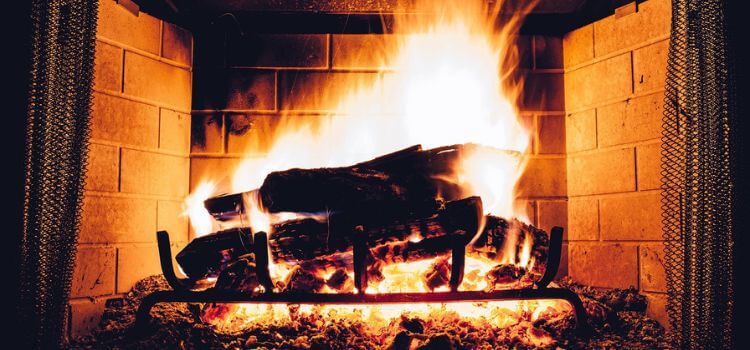
When installing electric fireplaces, following Installation Tips is crucial for optimal performance.
Diy Vs. Professional Installation
Decide DIY vs. professional installation based on complexity and your expertise.
Electrical Requirements
Ensure electrical requirements match fireplace specifications for safety and efficiency.
Placement And Ventilation
Consider placement and ventilation to prevent overheating and ensure proper air circulation.
User Experiences And Reviews
One of the most common questions regarding electric fireplaces is whether they provide heat. While the answer is typically yes, the amount of heat generated can vary depending on the model and brand. To better understand what to expect, looking at consumer ratings, testimonials, brand reputation, and reliability is helpful.
Consumer Ratings
One way to gauge the effectiveness of an electric fireplace is to look at consumer ratings. Websites like Amazon and Home Depot allow customers to leave reviews and ratings on purchased products, including electric fireplaces. Reading through these reviews can give you an idea of how well a particular model heats a room, how easy it is to use, and how durable it is over time. Remember that some people may have unrealistic expectations or may have experienced issues that aren’t representative of the product, so it’s essential to read a range of reviews and use your judgment.
Testimonials
In addition to consumer ratings, testimonials from individuals who have purchased and used an electric fireplace can also be helpful. These can be found on manufacturer websites or independent blogs and review sites. Testimonials often provide more detailed information about the user’s experience, including how the fireplace looks and sounds, how quickly it heats a room, and how much energy it uses. Some testimonials may include photos or videos of the fireplace in use, giving you a better idea of what to expect.
Brand Reputation And Reliability
Finally, it’s essential to consider the reputation and reliability of the brand you’re thinking of. Certain brands have a reputation for creating durable, high-quality electric fireplaces. In contrast, others may have a reputation for being unreliable or prone to malfunctioning. Examining endorsements and reviews might help you understand what to expect. Still, it’s also helpful to research the brand itself. Look for information about their manufacturing processes, customer service, and warranty policies to get a sense of how reliable they are.
In conclusion, when considering an electric fireplace, it’s essential to look at consumer ratings, testimonials, and brand reputation and reliability to understand better how well it will heat your home and how reliable it will be over time.
The Environmental Perspective
Electric fireplaces provide efficient heat while being environmentally friendly. With no emissions or pollutants, they are a sustainable heating option.
Electric fireplaces have become increasingly popular recently because they are eco-friendly and cost-effective. Their heating capabilities are often debated, with many wondering whether they give off enough heat to replace traditional fireplaces. While electric fireplaces do provide heat, their environmental impact is frequently overlooked. This section explores the ecological perspective of electric fireplaces, focusing on their carbon footprint comparison and compatibility with sustainable energy sources.
Carbon Footprint Comparison
Electric fireplaces are eco-friendly as they do not release any contaminants or dangerous gases into the atmosphere. However, their carbon footprint is a subject of debate. While electric fireplaces do not use any fossil fuels, they do consume electricity, which is often produced by burning fossil fuels. This means that the carbon footprint of electric fireplaces depends on the source of electricity used to power them. According to a Lawrence Berkeley National Laboratory study, electric fireplaces emit around 0.008 pounds of CO2 per hour. In comparison, traditional fireplaces emit around 20 pounds of CO2 per hour of use. This means that electric fireplaces are a more environmentally friendly option compared to traditional fireplaces.
Sustainable Energy Sources Compatibility
Electric fireplaces can also be sustainable if run on sustainable energy, such as solar, wind, or hydroelectric power. These sustainable energy sources are considered eco-friendly and do not emit any greenhouse gases. Using electric fireplaces powered by renewable energy sources can lessen our carbon footprint and help create a greener environment. In addition, electric fireplaces are often more efficient than traditional fireplaces, which means they require less energy to produce the same amount of heat. In conclusion, electric fireplaces are an eco-friendly and cost-effective alternative to traditional fireplaces. While their heating capabilities may weaken, they have a lower carbon footprint. Sustainable energy sources can power them. We may use it to lessen our carbon footprint in electric fireplaces and help create a more environmentally friendly world.
Frequently Asked Questions
Electric fireplaces can heat a room by providing warmth through electric heating elements.
Electric fireplaces may produce less heat than traditional ones. They can be costly to install and may increase your electricity bill. Some people find them less visually appealing than real fireplaces. Additionally, they may not add value to a home like a traditional fireplace can.
Yes, electric fireplaces are efficient for heating, providing warmth and comfort while being energy-efficient and cost-effective. They are easy to install and use, making them a convenient heating option for many homes.
An electric fireplace can produce heat ranging from 4,000 to 9,000 BTUs to warm a medium-sized room.
Conclusion
Electric fireplaces provide efficient heating solutions with added convenience and style. Their versatility and ease of use make them popular for many homeowners. As you consider investing in an electric fireplace, assess your heating needs and space requirements for optimal functionality.
